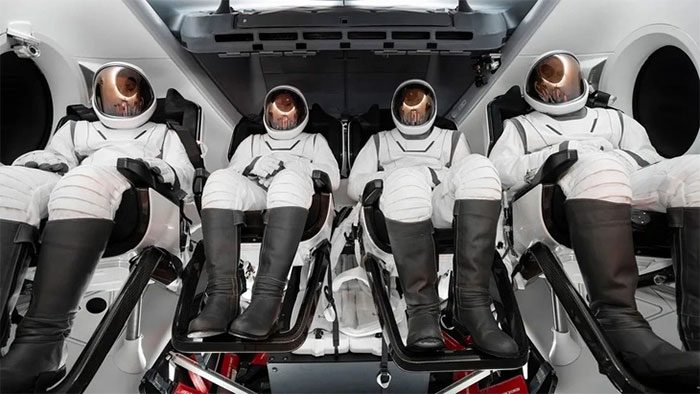SpaceX’s spacesuit can operate in both pressurized and unpressurized environments, being more compact and flexible than previous suits.
The technology company SpaceX, founded by American billionaire Elon Musk, recently unveiled a new Extravehicular Activity (EVA) suit, marking a significant advancement in commercial space flights.
This suit is considered a technical marvel, functioning both inside and outside the Crew Dragon spacecraft.

The crew of the Polaris Dawn mission will wear the new EVA suit – (Photo: SpaceX).
The EVA suit is very different from those used by the U.S. National Aeronautics and Space Administration (NASA) and the Russian Federal Space Agency (Roscosmos). It is less bulky and designed to be flexible and comfortable, according to IFLScience on May 9.
The design of the EVA is based on SpaceX’s Intravehicular Activity (IVA) suit, which astronauts wear when traveling to the International Space Station (ISS) aboard the Crew Dragon.
It can operate in both pressurized and unpressurized environments, featuring new improvements and backup functionalities to enhance reliability during spacewalks.
The SpaceX suit is also designed for flexibility in assembly. Different parts can be manufactured and assembled according to the wearer’s size, preventing a repeat of the historic first spacewalk by two female astronauts that was canceled due to NASA’s lack of available suits in the correct sizes.
SpaceX places great importance on these spacesuits and hopes they will accompany millions of people to the Moon and Mars in the future.
SpaceX will soon test these new suits in the first Polaris Dawn mission of the Polaris Program. In this mission, a Dragon spacecraft will fly to an orbit 700 kilometers from Earth. SpaceX has not yet announced a specific schedule for this mission, but it will not occur before this summer.
This will be the first commercial spacewalk and also the first time four individuals conduct a spacewalk simultaneously. This mission will take the crew higher than any previous private missions.
Over the course of five days, the team will conduct scientific experiments to better understand the effects of space travel on human physiology.
They will also be the first astronauts to test communication using the Starlink satellite system in space. SpaceX believes this is an important technological advancement for the future of deep space communication around Earth, the Moon, and even Mars.
NASA is also experimenting with this type of communication, sending messages from beyond the orbit of the Red Planet.


















































